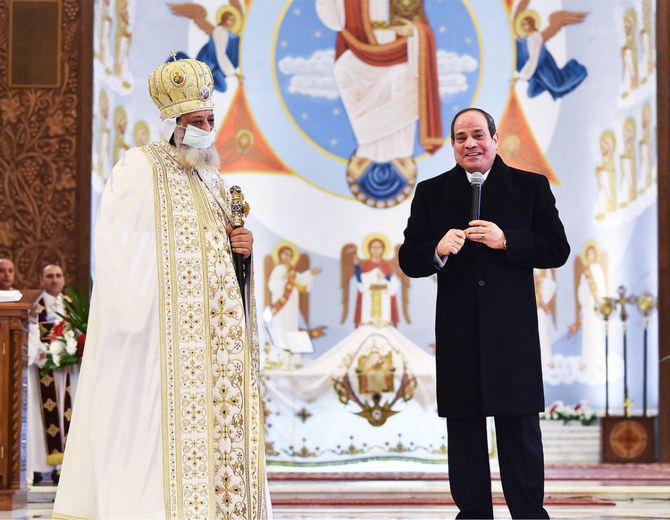LONDON: Coptic Christians in Egypt and in scattered migrant communities across the world celebrated on Wednesday the “Entry of the Lord into Egypt,” an annual feast day. That celebration is followed by The Holy Feast of Ascension, commemorating the Christian belief in Christ’s bodily ascension into heaven.
In a sense, the two consecutive feast days bookend the Coptic experience. The one marks their deep-rooted pride in an Egyptian heritage that predates the arrival of Islam, while the other celebrates the spiritual value of self-sacrifice, which would come to define the experience of a church forged in martyrdom soon after Christ’s death on the cross.
Back in April, Egypt’s Christians celebrated two other consecutive special days.
Orthodox Easter fell on April 24, a date set by the Julian calendar under which the Church of Alexandria operates, rather than the Gregorian calendar used by the rest of Christianity, with which the Copts parted ways over theological differences in the fifth century.
But the following day, together with Egyptians of all faiths, Copts celebrated the national holiday of Sham Ennessim. The origins of this festival of spring date back millennia to the days of the pharaohs and, like the Copts themselves, survived the Arabization of Egypt in the seventh century to become an integral part of Egyptian society.
Around the world are many Copts, some now second or even third generation, who were born on foreign soil after their parents emigrated in search of a better life, yet who also remain rooted in Egypt and its culture.
The life and work of Fadi Mikhail, a successful artist in the UK, symbolizes the generations who were born overseas to immigrant parents, but maintain strong ties to their Egyptian and Coptic heritage.
Mikhail’s parents, Hany and Salwa, emigrated from Egypt in the late 1970s, his father pursuing his career as a doctor in the UK. “The promise of higher pay and a better life called to him,” said Mikhail.
Born in Harlow, England, in 1984, Mikhail studied in Los Angeles under the renowned Egyptian iconographer Isaac Fanous before graduating from the Slade School of Fine Art in London.
Today, he produces icons for Coptic churches around the world, but his art is a visual bridge between East and West — he has a parallel career as a painter in the Western tradition, working in oils to produce landscapes, or drawing inspiration from books he enjoyed as a child.
His work is showcased by British galleries and has led to commissions for notable patrons, including the Prince of Wales.
Mikhail and his wife return to Egypt only for the occasional annual vacation. But, like most Copts scattered around the world, he says that “through the church I do still feel strongly connected to the Coptic faith and, by extension, Egypt.”
His interest in iconography “certainly began as a religious connection but has more recently become equally a part of my identity as an Egyptian.”

